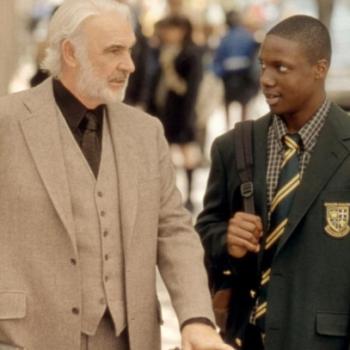Creation out of Nothing
Why do people get so unnerved when they see parallels between Avatar and Pocahontas? Or Fern Gully? Or Dances with Wolves? Or with Arkady and Boris Strugatsky's science fiction? Or even with unbridled capitalist exploitation?
Much of it stems from perhaps the greatest contemporary myth: the myth of the individual human who creates out of his own mind/spirit, unshackled from all tradition, pure genius, even transcending his own body. In the 1970s, literary critic Harold Bloom used the phrase "the anxiety of influence" to account for why modern poets attempted to separate themselves from their own tradition. The modern creator must discredit influence, build up the mythology of originality, the better to sell themselves to an audience that has fully incorporated the idea of "creation out of nothing." But once these new myths of the individual get told, take hold, and are retold, people recite them as a creed. "We are all individuals!" goes the collective anthem of Brian's disciples in Monty Python's astute spoof of Jesus films, The Life of Brian. And once this happens we've lost deep creativity.
By denying our own influences, standing up for our individuality (however collectively), and demanding that all artwork (including the creation of our own self) be wholly original, we deny a connection with tradition and with other people. The irony of the "myth of the individual" is that once we collectively agree to the story, we are no longer really the individuals we thought we were, our cultural products not as original as we imagined them. Tradition is not an unchanging static movement, but a record of a series of changes; and the individual is an amalgamation of her own stories and histories. Traditions are always moving, and the stories we tell about ourselves shift in accordance.
Avatar is unoriginal, but it is regenerative and re-creative for many. It reaffirms age-old narrative structures of "heroes" who must come from elsewhere to achieve the task of salvation; of power structures based on race, class, gender, and disability; of the colonized and the colonizers; and of the inspirations that come from glimpses into other worlds. All this is not to say "I" agree with its overall message. I'm simply trying to account for its Rorschach nature, and for the ways such mythologies operate, get retold, and establish themselves within the continuum of tradition. Until we can all get over our modern rejection of myth as a negative, false category, we will not be able to reconfigure structures of power based on race, class, gender, and physical ability. And until we can come to better terms with the contrived mythological nature of our own individuality, we will not be anything more than mimes.
This article was first published at Religion Dispatches, a Patheos Partner, and is reprinted with permission.
S. Brent Plate is visiting associate professor of religious studies at Hamilton College. His recent books include Religion and Film: Cinema and the Re-Creation of the World; Blasphemy: Art that Offends. With Jolyn Mitchell he co-edited The Religion and Film Reader. He is co-founder and managing editor of Material Religion: The Journal of Objects, Art, and Belief.




